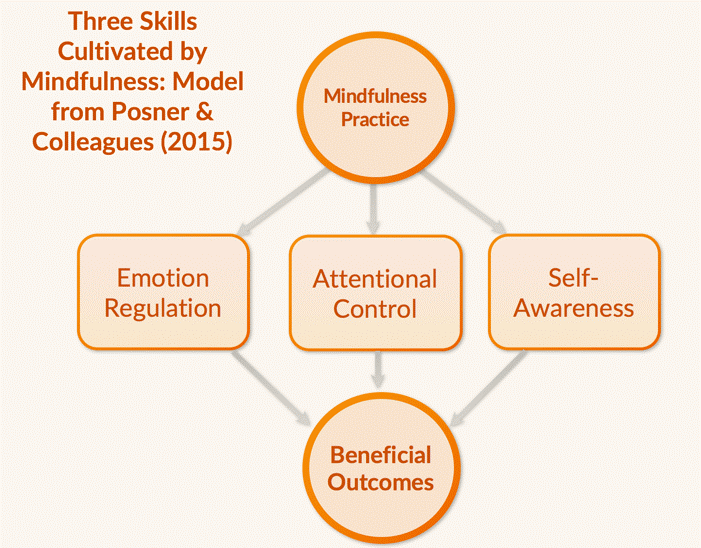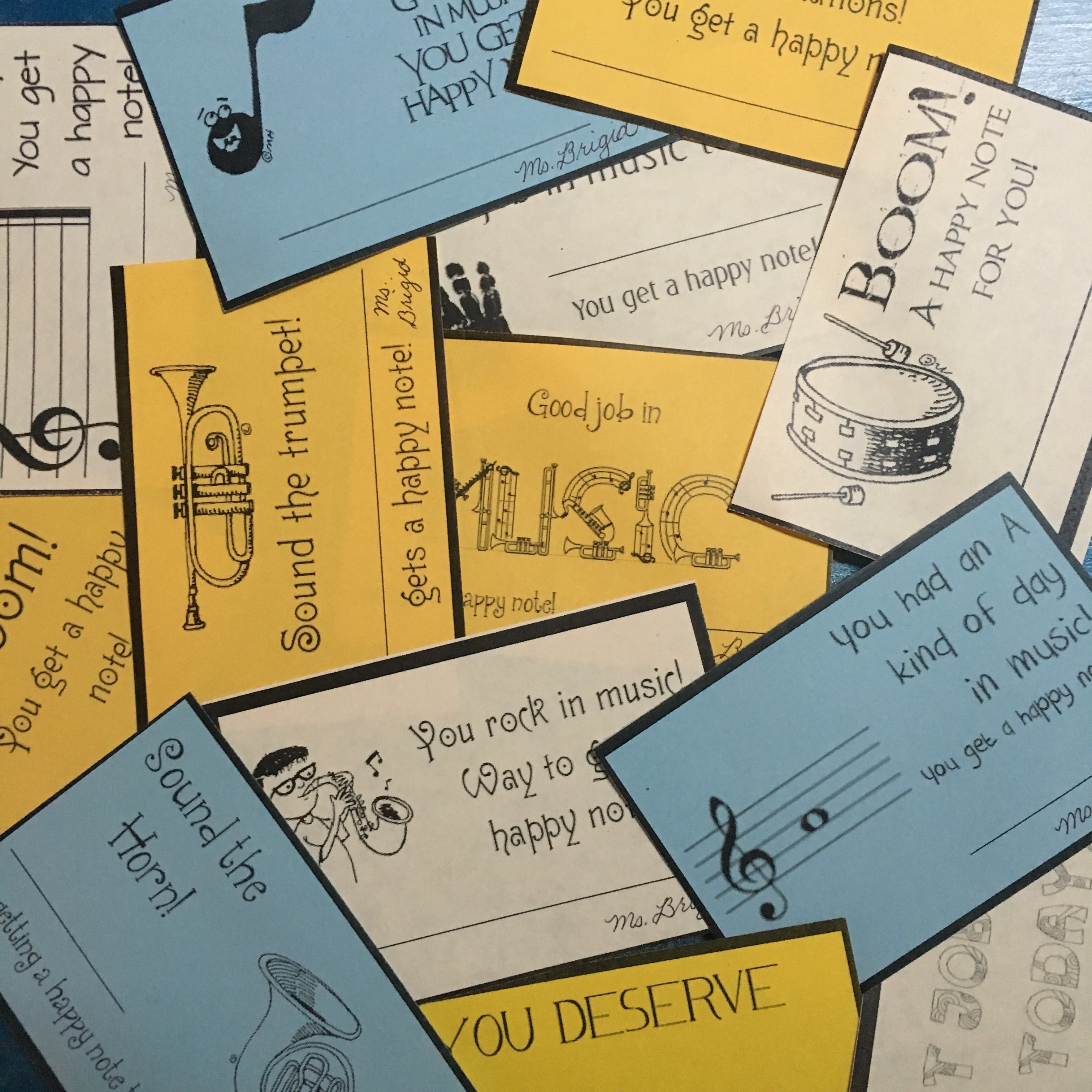
Music With Older Kids
Rituals and Rhythms,
Part I
by Brigid Finucane
Until a few years ago, my public school teaching focused on kindergarten through third-grade general music. My organically crafted sequence teaches foundational elements through the Kodaly philosophies of “sound before sight,” “prepare, present, practice,” song and story, dance and movement activities. Classes are joyful, include rich opportunities for exploration and student participation, are responsive to the school calendar and culture, and looked forward to by the students—and by me!
After studying recorder in third grade, students have an option to join the band program the following year. A majority of students from each of the two grade-level classes trek down to the band room for their musical adventure twice a week, while non-band students (NBS) have unstructured time in their classrooms. The band teacher is beyond grateful that incoming students have a musical foundation, can read music, know the importance of practicing, and possess an understanding of embouchure (position of lips, tongue, teeth, facial muscles necessary to play a wind instrument) from their recorder work.
All was going well. Then came a disturbance in the force. Over the first year of band, the participation ratio shifted as students dropped out. Parents objected that there was no musical enrichment for the NBS. In response, shortly before the start of school two years ago, there was a request to teach fourth- and fifth-grade general music. I accepted without hesitation. I loved my third graders from the previous year and was excited to work with the older kiddos. Unfortunately, this feeling was not reciprocated by many of my incoming students. The NBS, as it turned out, were fine with unstructured time (and given the intensity of their schedules and the demands of their work, I could hardly blame them). The NBS classes also had a 1:2 girl:boy ratio, and many students had an elevated energy level (i.e., were jumping out of their skins).
The first year was a challenge, especially my fifth-grade class. Interested students were outnumbered by those who were too cool for school. Due to band attrition, the class roster grew to over forty students as the year progressed. Energy levels often exploded in the service of pure goofiness. Growth spurts and hormonal shifts also contributed an unsettling undercurrent. Hard times. Eventually, through research, experimentation, and soul searching, and with support from music teacher friends, I learned and put in place content that (mostly) engaged the kiddos, including my hard cases.
Breathe
Rituals Rule. All classes, not only music, clearly benefit from defined beginnings and endings, as well as methods of transition.
During the first year, I started the class with a modified sun salutation and several additional yoga poses as balance challenges. My fifth graders actually did pretty well (after initially resisting) and in many cases carried the practice home. Space limitations were a drawback, however, and prompted me to adopt another course of action.
 (photo source: mindfulschools.org)
(photo source: mindfulschools.org)
Now I begin classes with a seated social-emotional learning (SEL) equal-breath exercise followed by a gathering chant. SEL practice allows students to peacefully and effectively transition from a careening journey down two flights of stairs into the music space. The activity’s effects correspond to the mindfulness skills articulated by Posner’s model (right).
The SEL exercise consists of taking equal breaths while simultaneously drawing around, or outlining, one’s hands. It is used at the beginning of every class. Months after implementing it, I found out that the technique is often used with trauma victims as a calming and centering technique. I learned it from Carla Tantillo, founder of Mindful Practices. Her foundation is in Chicago, and I’ve been fortunate to attend many of her teacher-oriented workshops.
- Sit with legs crossed in “singing position,” which is achieved by placing both hands on your head, resulting in a relaxed but straight back and engaged core muscles. Float arms gently down without collapsing shoulder or body. Place hands in lap. Breathe slowly and deeply into your belly, rather than shoulder and chest area.
- Raise one hand to chest level in front of body. Using the other hand’s pointer finger, slowly draw, or outline your hand from the wrist up to the tip of the thumb while inhaling. Use even beats (try a slow count of 4). Exhale, using four beats, while drawing down the inner side of the thumb. Repeat with all five fingers.
- Change hands and repeat.
Initially we worked in silence. Gradually I added music, making sure different genres and time periods were represented. I use the same piece two weeks in a row. Many times, my song selection is presented later during class as a vocal, movement, or listening excerpt.
Honoka & Azita - Bodysurfing
If the energy level of the class is still elevated, I add body tapping to connect the kiddos to their bodies. Using a cupped hand, we gently but purposefully tap from the shoulder to the hand and back, switch hands and do the other arm. We progress to the legs, trunk, then to the head and face. We end by giving ourselves a hug, using crossed arms.
On occasion, I project music videos while drawing our hands. Sometimes showing videos is a heartrendingly beautiful and successful addition, but not always. At times the video reigns supreme. Case in point: at the end of the year I gave the fifth grade, which had been studying ukulele all year, two choices for a SEL YouTube. Students overwhelmingly chose “none of the above,” requesting one of their favorite ukulele performance videos, Honoka and Azita’s “Bodysurfing.” Forget the SEL! I didn’t mind. The class was in a happy place during and after watching.
Move
We followed the equal breath exercise with a gathering chant of indeterminate origins. We chant while seated, then stand and repeat. I’ve added simple movements to the chant.
Down is the earth.(Drum the floor with both hands)
Up is the sky.(Reach both arms overhead towards ceiling)
Here are my friends(Hands, arms stretch out on either side of body)
And here am I.(Point to your body. Optional: give a hug.)
When students stand and repeat the chant, the bending and stretching helps students connect to their body, the group, and the space in the room in a peaceful and positive manner. We repeat the chant from two to five times, depending on the needs of the class or what concept I want supported.
I vary the chant midway through the year by adding dynamics, for example, chanting it pianissimo then mezzo forte, or repeating sequentially to create an extended crescendo. I vary tempo and quality of movement by asking students to chant and move largo, moderato, allegro, or presto. Sometimes we even perform it backwards (always a hit, and it feels completely different) or silently (audiation).
Leave Happy
Class closure always ends with sol-mi repetitions and Curwen hand signs (CHS), and a coda that has grown over this past year as kiddos contribute additional rhymes. On occasion, I’ll invite those who want to sing the goodbye pattern as a solo to do so. After one or two singers break the ice, usually a sea of hands erupts, and it’s a lickety-split process to go from one singer to another until everyone is heard.
Goodbye everyone.(sol-mi, sol-sol-mi)Students repeat (CHS)
I’ll see you all next week.(mi-re-fa-mi-re-do)Students repeat (no CHS)
Cha cha cha.(do-do-do)Students repeat (CHS)
Ooh la la.
Todah rabah.
Chiquita.
Banana.
Chewbacca, etc.
I sing the next phrase, “It’s time for happy notes” with the same melody as “I’ll see you all next week.” What is a “happy note”? It’s a rectangular magic ticket handed out at the end of class to two to four students who have distinguished themselves by participation, leadership, or an act of friendship or compassion during class. I stumbled upon the concept on a music educator’s Facebook group, and scoured the Internet for more information. Enter the Teachers Pay Teachers site, Teaching Music in Joy, which offers a free download of sixteen happy note templates!
Happy Notes
I started using happy notes in kindergarten through third grade, to rave reviews from kiddos, teachers, and parents. I kept a notebook where I jotted down names for each week, so I could keep track of recipients. Everyone in the class received a happy note during the first semester. The second semester differed. Though I still kept track, students could be awarded multiple times. Happy note etiquette required that there be no sour grapes, and that the class congratulate the recipients.
 Happy Notes
Happy Notes
After a month of school, I wondered how happy notes would work in the fourth and fifth Grades. No worries! My kiddos, even the curmudgeons, were wildly enthusiastic. I heard exclamations of “My brother got one last week,” or “Cool,” or “My sister brought one home a few weeks ago and was super-excited.”
Eventually, I allowed a small group of students (a different row of six to seven students each week) to pick the recipients. They were reminded of their job at the beginning of class and took the responsibility seriously. Because two classes were combined into one large music class, the rule was that two happy notes would be given to each class. This worked well with two spectacular digressions:
1) The boys in one group only chose boys to award, and the girls rebelled. Each group handed out their gender-based decisions separately.
2) Perhaps emboldened by this event, a gang of seven decided that they could each hand out two happy notes, which they did in dramatic and hilarious fashion.
After reminding the class of the original rules and stipulating that happy note designation would revert back to the teacher if they weren’t followed, we returned to the four-note plan.
My tips: enlarge the happy notes, print on a variety of colored paper, and sign each one before distributing. One fifth-grade mom confided that her daughter taped her happy notes over her bed.
In Part II, I’ll share favorite rhythm and movement activities for this very active age group.
Until then, keep on singing!